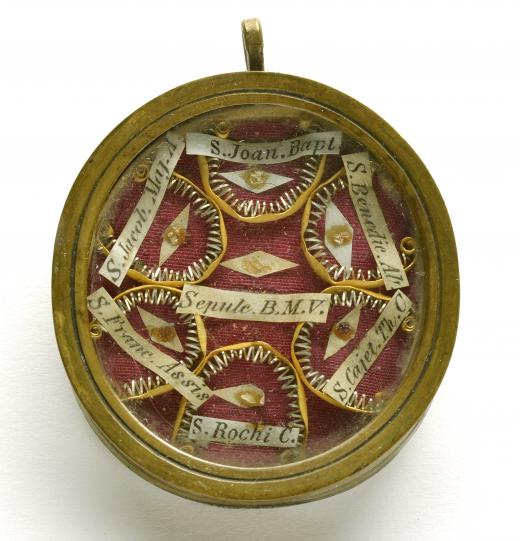What are out-Of-Place Artifacts (OOPArts)?
 Michael Anissimov
Michael Anissimov
An out-of-place artifact (OOPArt) is an artifact radically out of time or place, often to a seemingly impossible extent. An example would be an alleged human sandal print found in the Wheeler Formation, which dates to the Middle Cambrian, about 500 million years ago. In the "print" are two apparently crushed trilobites. Another famous out-of-place artifact is the Coso artifact, a spark plug from the 1920s found encased in a lump of hard clay or rock that one of the discoverers claimed had to be 500,000 years old. A more recent example is the Kensington runestone, a Norse artifact that is alleged to be from the 14th century, found in Minnesota, USA.
Out-of-place artifacts are beloved by fans of anomalous phenomena (Forteans) and creationists, who see antediluvian human artifacts as evidence that man really did exist in the earliest days of the Earth's existence, as Genesis claims. The problem with most OOPArts is that they can rather easily be identified as hoaxes or instances of pareidolia (seeing what we want to see) rather than verified as genuine. For instance, the Coso artifact is clearly a spark plug made in the 1920s, and it is far more likely that it simply existed in conditions for the rapid accretion of hard clay around it than a time traveler went back 500,000 years into the past and tossed a spark plug on the ground.

Advocates of out-of-place artifacts are often impossible to convince of the false nature of even the most superficial hoaxes, such as Acambaro figures, new-looking and unbroken carvings of dinosaurs allegedly dating to thousands of years ago. But what complicates matters is that some out-of-place artifacts have been verified as genuine, though they are not as radical as those mentioned in the first paragraph of this article. Others, like the Kensington runestone, have fluctuated back and forth between considered by the experts to be a hoax or genuine.
One verified out-of-place artifact is the Baghdad Battery, a common name for several artifacts dated to around 100 CE that consist of a copper cylinder and iron bar within a terracotta jar. These batteries could have been used to electroplate gold onto silver objects, and, if they were really used as batteries, would predate Alessandro Volta's 1800 invention of the electrochemical cell by 1,700 years. Another is the Maine Penny, an 11th century Norse coin found in a Native American shell midden. Via a series of trades, this Norse coin made it from 11th century Viking settlements in Newfoundland hundreds of miles south, to Maine.
Other verified out-of-place artifacts include the Antikythera mechanism, a mechanical computer used to calculate the position of the Sun, Moon, and planets, and the Iron Pillar in India, dated to 300 BC, which has resisted corrosion for 2,300 years due to a number of unusual material factors.
AS FEATURED ON:
AS FEATURED ON:











Discussion Comments
Why do creationists assume that these objects are 'man' made? Surely it could be argued that these objects could be made by a completely different species. If we evolved from apes in a few million years, couldn't a similar thing have happened countless times before in the past from a different species?
Dinosaurs were around for many hundreds of millions of years. Isn't it possible that a species of dinosaur evolved a bigger brain, language, art, technology and culture? They may have looked very human-like but wouldn't be human. Jump forward in time ten million years. Do you really think humans will still be ruling the planet?
How much evidence of our existence will be around? Even plastics biodegrade in just a few thousand years. It is completely plausible that a new species could evolve to become sentient and have it's own culture and beliefs.
If it has happened once, it has probably happened at least once more in the past and will happen many more times in the future. I find the thought very humbling.
Post your comments